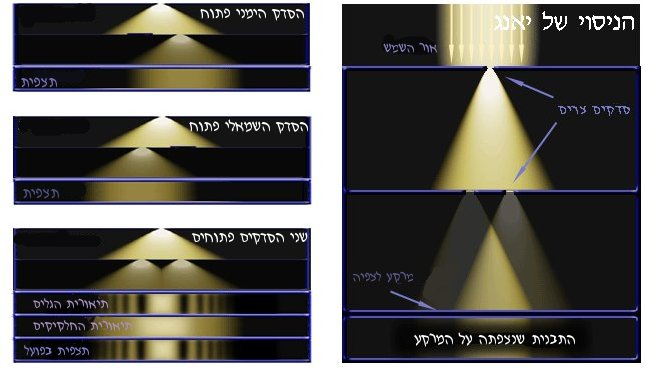Today’s blog is one part rehash of an ancient dilemma that has puzzled and divided philosophers and scientists for millennia and two parts The Universe – Solved!
First a couple definitions…
Objective Reality – a reality that completely exists independent of any conscious entity to observe it.
Subjective Reality – what we perceive.
As it is well known, subjective reality is “subject” to an elaborate set of filters, any one of which can modify a perception of that reality; sensory apparatus (e.g. the rods and cones in our eyes), sensory processing (e.g. the visual cortex), higher level brain function, and psychological factors (e.g. expectations). As such, what one person experiences is always different than what any other person experiences, but usually in subtle ways.
Fundamentally, one cannot prove the existence of an objective reality. We can only infer its properties through observations, which of course, are subjective. However, it may be possible to prove that objective reality doesn’t exist, if, for example, it can be shown that the properties inferred via a particular observer fundamentally contradict properties inferred via another observer. But even then those inferences may be hopelessly subjective. Suppose person A sees a car as red and person B sees the same car as green. We can’t conclude that there is no objective reality because person B could simply have an unusual filter somewhere between the car and the seat of their consciousness.
What if we can use some sort of high-precision reproducible measurement apparatus to make some observations on reality and find that under certain controlled circumstances, reality changes depending on some parameter that appears to be disconnected to the reality itself? There are a lot of qualifiers and imperfections in that question – like “high (vs. infinite) precision” and “appears” – but what comes to mind is the well-known double slit experiment. In 1998, researchers at the Weizmann Institute of Science, demonstrated that reality shifts depending on the amount of observation, even if the “observer” is a completely non-intrusive device. IQOQI upped the ante in terms of precision in 2008 by showing that objective reality doesn’t exist to a certainly of 80 orders of magnitude (probability of being false due to error or chance = 1E-80). That’s good enough for me. And, in 2012, Dr. Dean Radin conducted what appear to be well-designed and rigorous scientific experiments that show to a high probability that conscious intent can directly alter the results of the double slit experiment. Just as it only takes one white crow to prove that not all crows are black, it only takes one experiment that demonstrates the non-existence of objective reality to prove that objective reality is an illusion.
So that debate is over. Let’s get past it and move onto the next interesting questions
What is this reality that we all perceive to be “almost” solid and consistent?
I believe it is a digital consciousness-influenced high-consensus reality for reasons outlined here. It has to have a high degree of consensus because, in order to learn and evolve our consciousness, we have to believe in a well-grounded cause and effect.
What does “almost” mean?
We could define “almost” as 1 – (the degree to which apparent objective reality is inconsistent, either between separate observers, or in experiments that have a different outcomes depending on the state of the observer). For now, I’ll have to punt on the estimates because I haven’t found any supporting research, but I suspect it is between 99.999% and 1.
How does “almost” work?
Subjective reality does not mean that you can call the shots and become a millionaire just due to intent. The world would be insane if that were the case. Because of the “consensus” requirement, the effects are much more subtle than that. For you to see a passing car and make it turn red just because you want to, would violate the color consensus that must be maintained for the other 1000 people that see that car drive by. In fact, there is nothing to say that the aggregate of conscious intents from all conscious entities fully shape the subjective reality. Most of it may be driven by the rules of the system (that aspect of digital global consciousness that drives the projection of the physical reality). See the figure below. In the digital global consciousness system (see my The Universe-Solved! or Tom Campbell’s My Big TOE for more in depth explanations of this view of the nature of reality), Brandon and I are just individuated segments of the greater whole. (Note: This is how we are all connected. The small cloud borders are not impervious to communication, either from other individuated consciousnesses (aka telepathy) or from the system as a whole (aka spiritual enlightenment)).
Brandon’s reality projection may have three components. First, it is generated by the system, based on whatever rules the system has for creating our digital reality. Second, it may be influenced by the aggregate of the intent of all conscious entities, which is also known by the system. Finally, his projection may be slightly influenced by his own consciousness. The same applies to my own projection. Hence, our realities are slightly different, but not enough to notice on a day-to-day basis. Only now that our scientific instrumentation has become sensitive enough, are we starting to be able to realize (but not yet quantify) this. Perhaps 5% of reality is shaped by the aggregate consensus and 95% by the system itself. Or 1% and 99%. Or .00001% and 99.99999%. All are possible, but none are objective.










